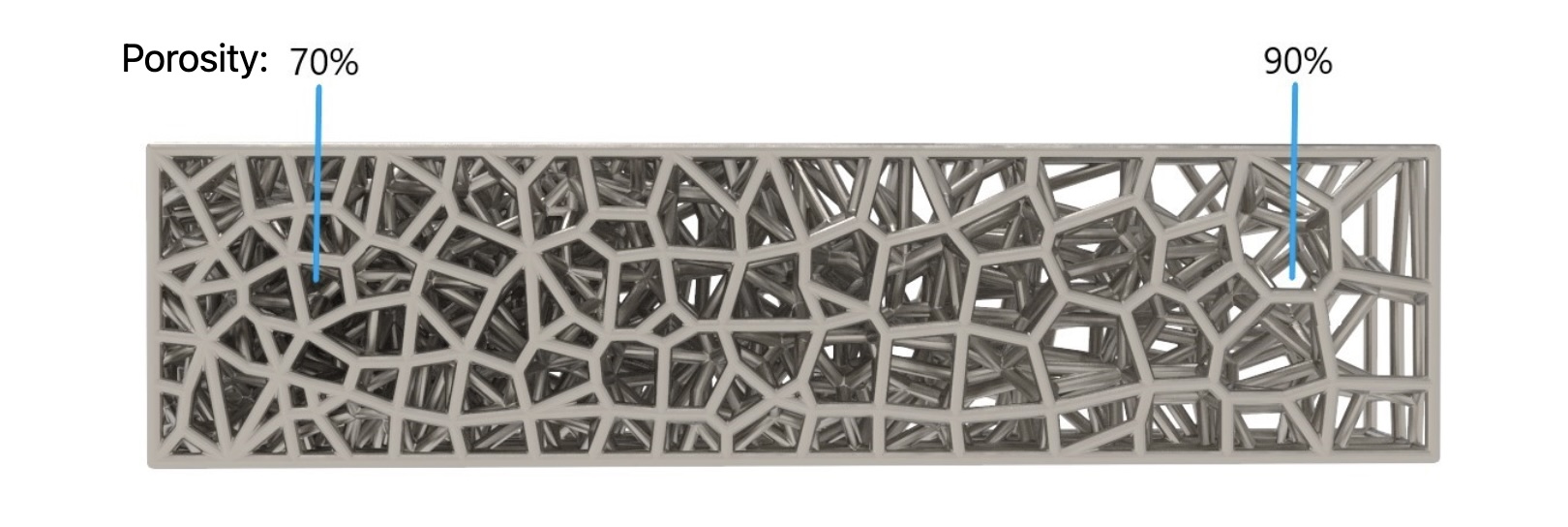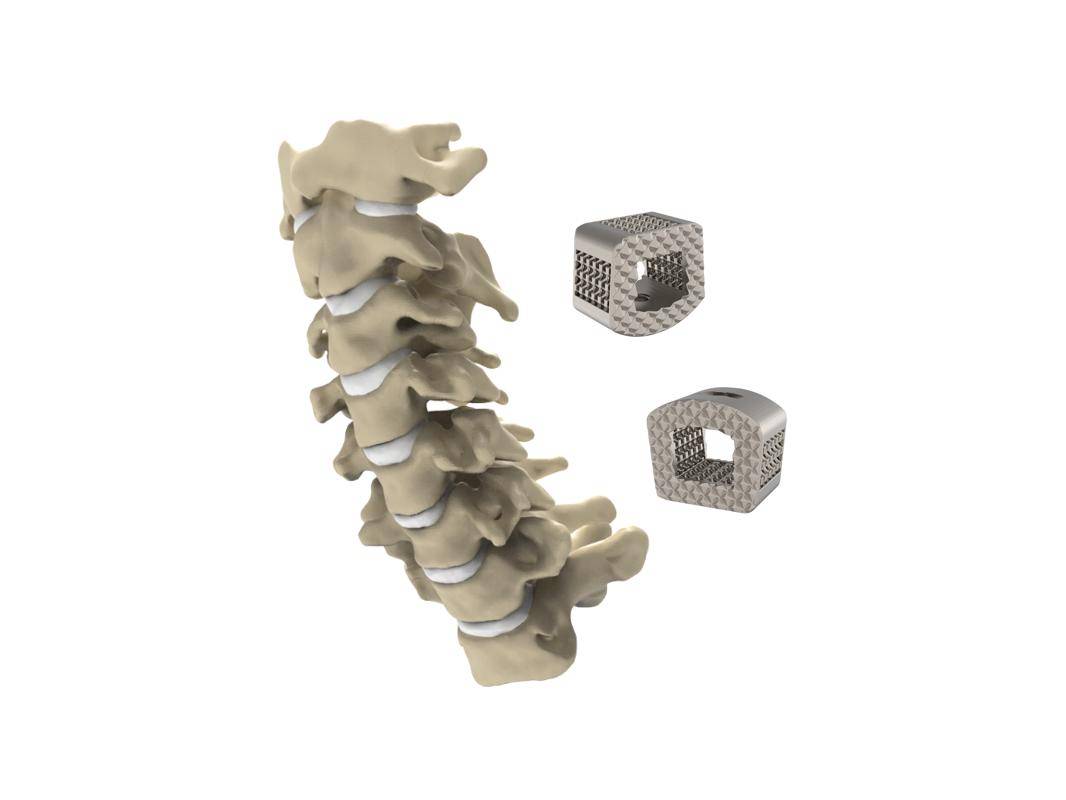Doctors at Tulsa Spine & Specialty Hospital have performed three spinal surgeries using 3D printed titanium implants for spinal fusion. Surgeons Daniel Harwell and Michael Thambuswamy completed the procedures, which used ZSFab’s proprietary InterConnect Lumbar Interbody System to join vertebrae in the lower back.
ZSFab designed these implants for a type of spinal surgery called Posterior Lumbar Interbody Fusion (P-TLIF), where the surgeon accesses the spine from the back, removes the intervertebral disc, and fills the space with an implant. This process helps the vertebrae fuse together, providing stability and reducing pain.
The InterConnect system features digitally structured P-TLIF interbody cages 3D printed from porous titanium. These cages have a unique structure that mimics natural bone, helping the implants integrate better with existing bone and promoting stronger fusion and faster healing. This marks the first clinical use of ZSFab’s InterConnect system in the U.S., offering customized solutions that improve patient outcomes. It is a new milestone for both ZSFab and the field of orthopedic devices.
“ZSFab specializes in creating implants that harmonize with the patient’s biomechanics, addressing issues like load distribution, stress on adjacent segments, and construct stability,” said David Ma, Director of Research and Development for ZSFab. “Our optimized designs help promote beneficial elastic deformation within the lattice structures, inducing mechanical stress that activates osteoblasts for new bone growth, leading to a more efficient fusion process.”

ZSFab can customize porosity, pore sizes and modulus according to patients’ bone needs. Image courtesy of ZSFab.
Each year, over 400,000 spinal fusion surgeries are performed in the U.S., addressing conditions such as degenerative disc disease, recurrent disc herniation, spondylolisthesis, and spinal stenosis. Traditionally, these surgeries used bone grafts sourced from the patient, a donor, or synthetic materials. Over the years, spinal fusion surgeries have evolved from using bone grafts to incorporating advanced materials and techniques, such as robotic-assisted surgeries and minimally invasive procedures.
The development of spinal surgery now includes 3D printed titanium implants, like those by ZSFab. Due to their porous structure, these implants offer better integration with bone and faster healing. These implants can also be customized to match the patient’s anatomy, improving fit and performance.
ZSFab’s InterConnect system marks a significant upgrade in spinal surgery. The Boston-based spine and orthopedic devices company designs, additively manufactures, and markets products to drive innovative spine and orthopedic surgery solutions. Surgeon partnerships like the one with Tulsa Spine & Specialty Hospital are not the first. In fact, last week, ZSFab also announced the inaugural use of another 3D printed titanium implant designed for cervical spine surgeries in the neck region. This procedure was performed at Palisades Surgical Suites in Fort Lee, New Jersey, by Timothy Roberts, who has previous experience with ZSFab’s spinal implants.
“ZSFab is dedicated to enhancing patient care through continuous innovation and the development of cutting-edge medical solutions. As the experts in digitally structured materials and 3D-printed spinal implants, we look forward to ongoing collaboration with facilities like Palisade Surgery Center,” pointed out Ma in a recent LinkedIn post.
ZSFab is developing unique, high-performing implants with its software tools, advanced modeling and optimization methods, and 3D printing technology, specifically Selective Laser Sintering (SLS).
The use of 3D printed implants in orthopedic and spinal surgeries has been growing steadily. According to a report by Additive Manufacturing Strategies, the global market for 3D printed medical devices is expected to reach $16.5 billion by 2034, with spinal implants being one of the fastest-growing segments.
Successful surgeries in recent years have highlighted the potential of 3D printing technology in creating customized implants that offer better fit and functionality than traditional methods. One notable example is the 2019 use of 3D printed titanium implants by Australian neurosurgeon Ralph Mobbs for a patient with severe spinal degeneration.
Another case in 2020 involved surgeon Nicholas Theodore at Johns Hopkins University using 3D printed interbody fusion cages. The personalized cages were designed to match the patient’s anatomy, resulting in improved surgical outcomes and faster recovery times.
3D printed implants, like the ones developed by ZSFab, have several advantages over traditional implants. Firstly, 3D printing allows the creation of implants tailored to the patient’s specific anatomy, improving fit and performance. Also, the porous structures in the InterConnect system promote bone growth and faster fusion by mimicking natural bone architecture. Custom-fit implants can also reduce the need for intraoperative adjustments, shortening surgery time and minimizing risks. Finally, personalized implants have been proven to lead to better surgical outcomes, including quicker recovery and reduced post-operative complications.
ZSFab’s first clinical use of its lumbar implant in the U.S. is a step forward in spinal surgery. What’s more, the company’s commitment to cooperating with surgeons guarantees that its products will continue to evolve, setting new standards in spinal and orthopedic surgery.
Subscribe to Our Email Newsletter
Stay up-to-date on all the latest news from the 3D printing industry and receive information and offers from third party vendors.
You May Also Like
APWORKS Expands Scalmalloy 3D Printing with Farsoon and CNPC Partnerships
In the lead up to Formnext 2024, Airbus subsidiary APWORKS has teamed up with Farsoon Technologies and CNPC Powder to expand the production and application of Scalmalloy, APWORKS’ high-strength, corrosion-resistant...
3D Printer OEM Axtra3D Raises Nearly $10M in Series A
Axtra3D, an original equipment manufacturer (OEM) of 3D printers leveraging the company’s patented Hybrid Photosynthesis (HPS) technology, has received another $4.5 million in Series A financing, bringing its total Series...
Caracol AM to Launch its First Metal 3D Printer at Formnext 2024
Caracol AM, a US-Italian original equipment manufacturer (OEM) of large-format additive manufacturing (AM) systems, has announced the launch of the company’s first metal printer, Vipra AM. A directed energy deposition...
ADDIMETAL to Debut First French Metal Binder Jetting 3D Printer at Formnext 2024
ADDIMETAL, a French original equipment manufacturer (OEM) of additive manufacturing (AM) hardware, will debut its first product, the K2-2 metal binder jetting (MBJ) printer, at Formnext 2024 in Frankfurt, Germany...







































